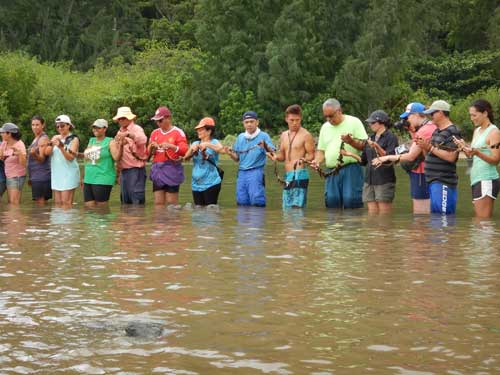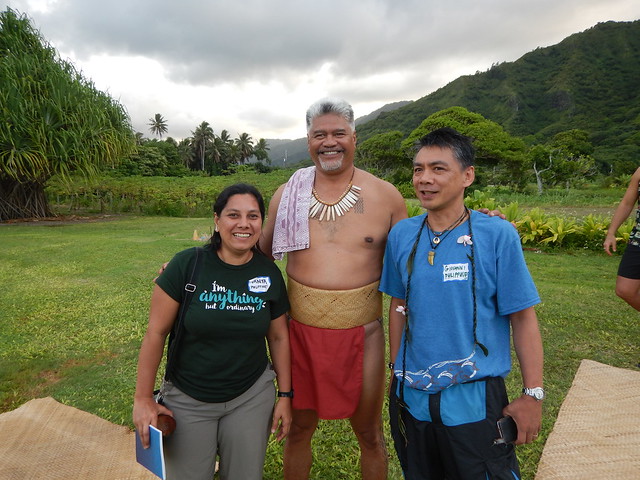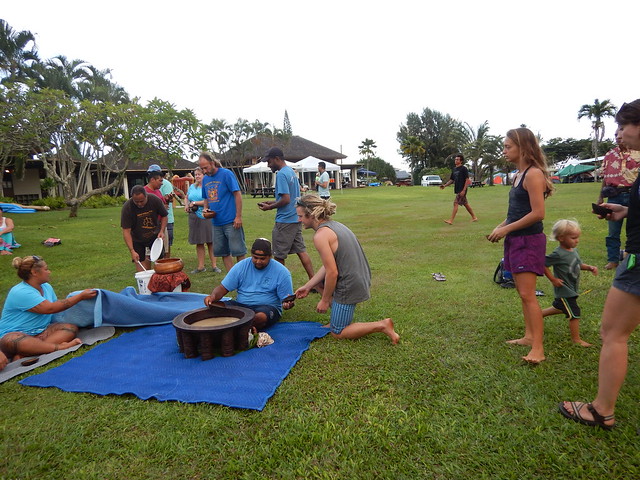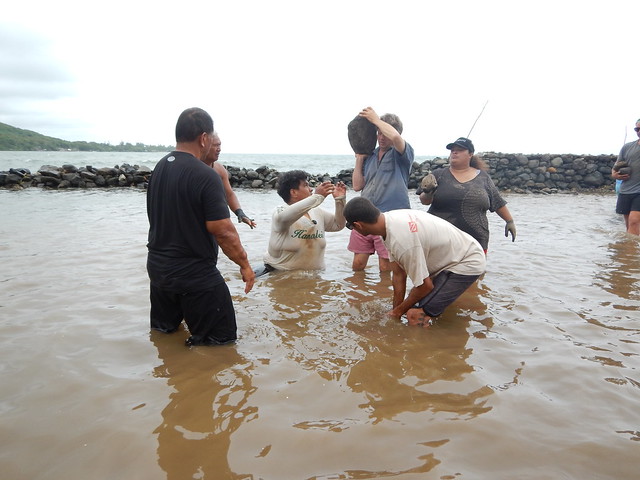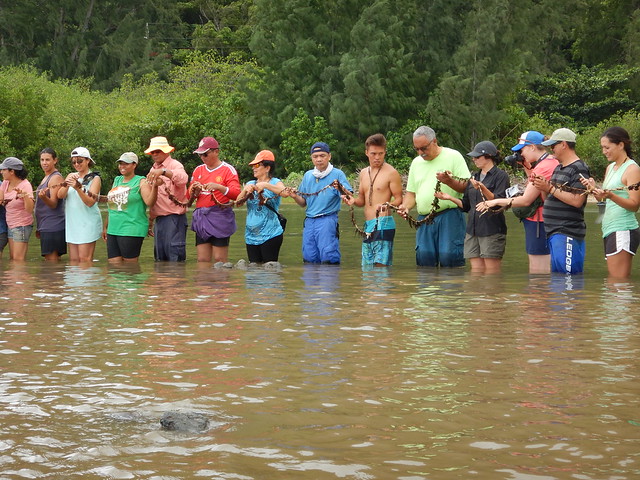OAHU, Hawaii – E Alu Pū is a network of community-based, grassroots groups and families from around Hawaiʻi who work together to improve and accelerate their efforts to care for the lands and the waters of their places.
In 2002, Uncle Mac Poepoe of Mo‘omomi shared an idea that communities around Hawai‘i could benefit from learning directly from one another how to better mālama ‘āina (to care for their resources). As a result, 45 people representing 13 communities gathered on the island of Molokaʻi in 2003. They confirmed the wisdom of Uncle Mac’s idea, and the E Alu Pū network was born.
Over time E Alu Pū grew from 13 to over 30 mostly rural and Native Hawaiian grassroots efforts to mālama (care for) their places with a shared vision of ʻāina momona— abundant ecological systems that contribute to community well-being. In addition E Alu Pū facilitated the creation of Kuaʻāina Ulu ʻAuamo (KUA) a non-profit organization developed for the purpose of gathering the network and creating a safe space for learning, dialogue and empowerment. KUA has also begun to facilitate two other networks: the Hui Mālama Loko Iʻa (traditional fishpond restoration network) and the Limu Hui (traditional seaweed gatherers). Today these communities continue to share lessons learned, build capacity and empower each other to move forward together toward their vision of restoring Hawaiʻi to a place of abundance.
This is a kāhea (call) to our indigenous ʻohana (family) and grassroots leaders from around the Pacific and the world. We invite you to break bread with us on the Windward Coast of Oʻahu before we all head to the opening of the IUCN World Conservation Congress Forum and the Pacific Summit.
29 August 2016
The Hawai’ians have invited indigenous peoples all over the world to a gathering in one of the estates of Queen Lili’uokalani in Oahu, a campsite between the mountains and the sea. Before the E Alu Pu (Moving Forward Together) could begin, all the guests had to undergo a ceremony seeking permission to enter the Queen’s grounds, and be welcomed by their Hawai’ian hosts in the Hawai’ian tradition. Among the guests are members of the ICCA Consortium.
The Philippine contingent, Tanya and Giovanni, with the Hawai’ian elder, who said he has Filipino roots.
Guests learn how to prepare seaweed for replanting. Hawai’ian coastal communities are traditional seaweed gatherers, and in the past years they realized that they had to protect and replenish this diminishing resource.
On this second day of the gathering, visitors are learning about the history, chants, language, food, and other aspects of indigenous Hawai’ian culture. Discussions have been ongoing about successes and challenges for each community, and participants are realizing that these are similar across the globe. One’s success is everybody’s success. Brothers and sisters from the Pacific are also realizing how much of their language and culture are similar.
All had to smoothen and polish their own apu, or coconut shell cup, to partake of the traditional kava.
30 August 2016
Today we heavily felt the “moving forward together” quite literally by heaving boulders, arm to arm. The boulders will be needed to form dikes, and we also built umus (rock formations in water where fish fry will be protected from predators) with them for the traditional fishpond of our host community. It’s quite disconcerting that mangroves, along with agoho and talisay, all precious species of our coastal ecosystems, are considered invasives here, thus undesirable. Invasive species have made a big impact on Hawai’i’s biodiversity, which are all paired between the land and sea. For every creature of the sea, a tree or plant from land is looking out for it. When I told Aunty Sharon that we also have the butterfly fish but not the tiger’s claw tree, she was saddened and asked, who will look out for the butterfly fish in the Philippines?
Visitors help the host community in carrying rocks to the shoreline and building fish sanctuaries.
Kupunas (elders) from different continents are here, including First Nations from North America, Karen from Burma, Tao from Taiwan, Maoris and other Pacific islanders, including small island nations in Micronesia, and representatives from all across Hoakalani (Hawai’ian archipelago). In the midst of indigenous leaders with such a strong affinity for their aina (land/sea), I once again feel uncultured, unlanded, and a little ashamed of my conquistador heritage.
ICCA Consortium movers Grazia, Carmen and Giovanni take part in the limu (seaweed) circle, after every group has built their umus.
The community gives instructions on how to put the seaweed in the umus.
31 August 2016
The last morning before we broke camp, we had a reflection circle wherein each person shared his or her significant learning and the thoughts to bring forward to the IUCN World Conservation Congress the next day. All expressed their gratitude to the KUA organization and their staff, to whom this gathering was a dream turned reality, through chanting and presentation of traditional gifts. Many felt inspired and motivated to be strong in the face of adversities back in their homes. The elders were so touched that indigenous leaders and other guests from all over the world helped them with the passing of rocks, which is a traditional community activity amongst fishing communities in Hawai’i. Many were moved by this symbolic gesture, and they felt they were not alone. The group sentiment was that we face similar problems, and together, we can help each other fight for our land and oceans. About two hundred of us left Kaneohe in high spirits, determined to make our voices heard at the WCC.
Keep visiting this blog entry for more updates on E Ala Pu. For more information about KUA, please contact info@kuahawaii.org. To know more about the ICCA Consortium, click here.
Article by Tanya Conlu, NTFP-EP Asia
Photos by ICCA Consortium

